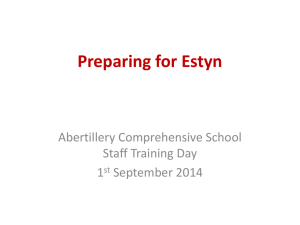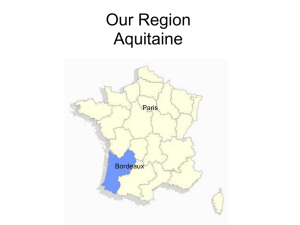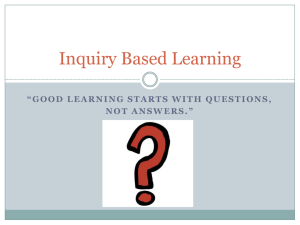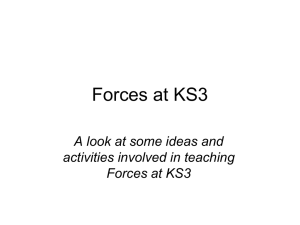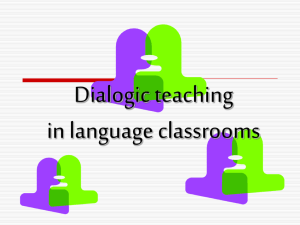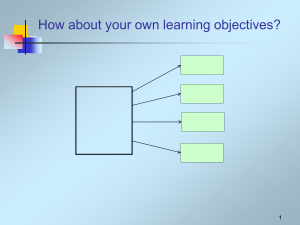PowerPoint - REAL Project
advertisement
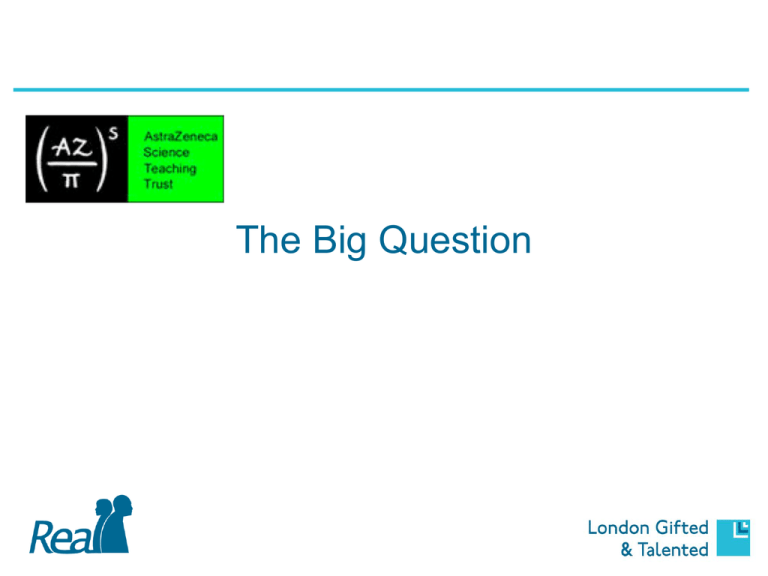
The Big Question Teaching for challenge Thinking Creativity Teaching for challenge Assessment for Learning Bright Ideas Time Game shows: Odd One Out PMI A big question Concept cartoons Discussing big ideas is more important than finding the right answer Questioning List the different types of questions that you use within the classroom Compare with another person & try to categorise them Investigation of the pedagogical impact of the National Literacy and Numeracy Strategies: Most of the questions asked were of a low cognitive level designed to funnel pupils’ response towards a required answer. Alexander, R. (2006) Towards Dialogic Teaching Open questions made up 10% of the questioning exchange Probing Qs where teacher stayed with the same child to ask further Qs to encourage sustained & extended dialogue in just over 11% of questioning exchanges Rarely were teachers’ questions used to assist pupils to more complete or elaborate ides Most of pupils’ exchanges were very short – answers lasting on average 5 seconds & limited to 3 words or fewer 70% of time Alexander, R. (2006) Towards Dialogic Teaching How can we do better? Higher Order Questions Revision questions and those requiring only the representation of known material (simple comprehension) attract lower order answers; while questions that ask students to deduce, hypothesise, analyse, apply, synthesise, evaluate, compare, contrast or imagine attract higher order responses. Kerry & Kerry: The Centrality of Teaching Skills in Improving Able Pupil Education Skinny questions: Check pupils’ knowledge Often one word answers Seeking facts Rich questions: Open ended Needs time to think – can’t usually answer immediately Answers generally require one or more sentences Sometimes pupils need to ask other questions to work towards main question Tend to prompt further questions Need to make links, apply ideas, give reasons Science Inside the Black Box Black & Harrison, nferNelson Thinking time Think Pair Share How do we know that the Earth is a sphere? (Not allowed pictures from space) Think, pair, share ‘If it’s flat, when you make the foundations for a temple why doesn’t it go through?’ ‘Why doesn’t water fall off the edge if the Earth is flat?’ One 11 year old said… “Because gravity comes from the centre of the earth, because a sphere is the smallest shape you can make from the centre, it would most likely be pulled up into a sphere.” Bright ideas Time: Why don’t the Australians drop off? What causes gravity? ‘The core is like a big magnet.’ ‘Is it because the world is spinning?’ Mass attracts mass Sorry…no excuse ‘Pencils produce gravity but not enough to attract anything.’ ‘If you push the two books out in a space craft, in a few days they would gradually pull together…where there’s no friction.’ ‘It’s a force that pulls things to the centre of the earth.’ ‘It makes things fall’ ‘It causes the tide to come in.’ ‘I think it’s a force that grows in outer space and it picks up rubble and pulls it together.’ You have sheets of ‘More ideas for the Big Question: • Try some out in school and be prepared to share how they went when you come back for session 3 Questioning contd. In pairs: Look at the picture on the screen. What does it make you think about? What do you think it is? Can you think of some science questions about this picture? Which frog has a bigger mouth? Are you sure? Measure to find out. What do you see? 1. Man Playing Horn... Or Woman Silhouette? 2. Rabbit or duck? 3. A Face Of A Native American... Or An Eskimo? When questions arise in the classroom that no-one can answer, put them in the poster of the light bulb Questions Challenge: who can find the answer? I asked the best question this week My question was … We may need to accept that the child’s answer can never be the end of a learning exchange (as in many classrooms it all too readily tends to be) but its true centre of gravity. There’s little point in framing a well-conceived question & giving ample ‘wait time’ to answer it, if we fail to engage with the answer they give & hence with the understanding or misunderstanding which that answer reveals. Alexander, R. (2006) Towards Dialogic Teaching

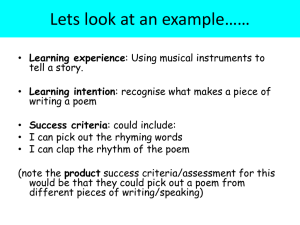
![afl_mat[1]](http://s2.studylib.net/store/data/005387843_1-8371eaaba182de7da429cb4369cd28fc-300x300.png)
